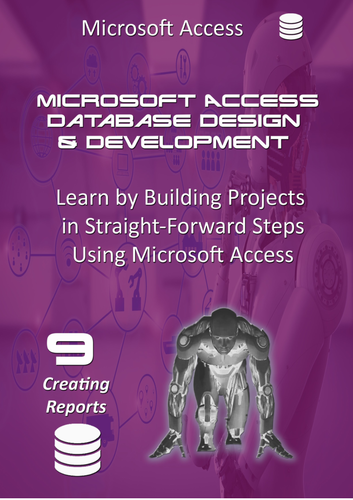



Learn Microsoft Access and relational database management systems (RDBMS) by building projects.
In this session, we will be focussing on the output functionality of Microsoft Access for the first time – We will create and explore Reports.
It is crucial to learn how to create reports in Microsoft Access because reports provide a comprehensive overview of the data stored in a database.
Access reports can help managers make informed decisions by summarising data in a clear, concise format. Reports can highlight trends, critical metrics, and potential issues, allowing users to take proactive steps to address them.
Without reports, it would be challenging to extract meaningful insights from the data, leading to inaccurate decision-making.
Mastering Access reports is essential for achieving operational excellence and making data-driven decisions.
Microsoft Access is one of the most widely used database management systems in the world and is the tool we will be using in this series to explore RDBMS.
The set is ideal for beginners who want to learn Access from scratch, with all tutorials activity-based to reinforce learning and engagement. After each learning session, there are challenges based on the topics just covered, giving you a chance for personal reflection and to test your understanding.
It is crucial to be able to understand Relational Database Management Systems (RDBMS) and participate in this field as it is integral to the functioning of modern businesses.
Emerging Technologies
Relational database management systems (RDBMS) are widely used in emerging technologies due to their ability to efficiently manage large volumes of data.
Examples of application include;
• The Internet of Things (IoT), where RDBMS is used to store and manage the massive amounts of data generated by connected devices.
• Artificial Intelligence (AI), where RDBMS is used to store and analyse data that is used to train machine learning algorithms.
• Blockchain technology also utilises RDBMS to store transaction data in a decentralised and secure manner.
• Cloud computing to store and manage data in a scalable manner.
Clearly a great career-move would be to understand and develop skills in this attractive field.
Check out this extensive and invaluable set of resources – for both teachers and students alike
Resources in both Word and PDF formats to enable customisation and personalisation.
There is a combined set all in one place on Tes at a reduced cost for buying the collection.
See what you think!
Something went wrong, please try again later.
This resource hasn't been reviewed yet
To ensure quality for our reviews, only customers who have purchased this resource can review it
Report this resourceto let us know if it violates our terms and conditions.
Our customer service team will review your report and will be in touch.